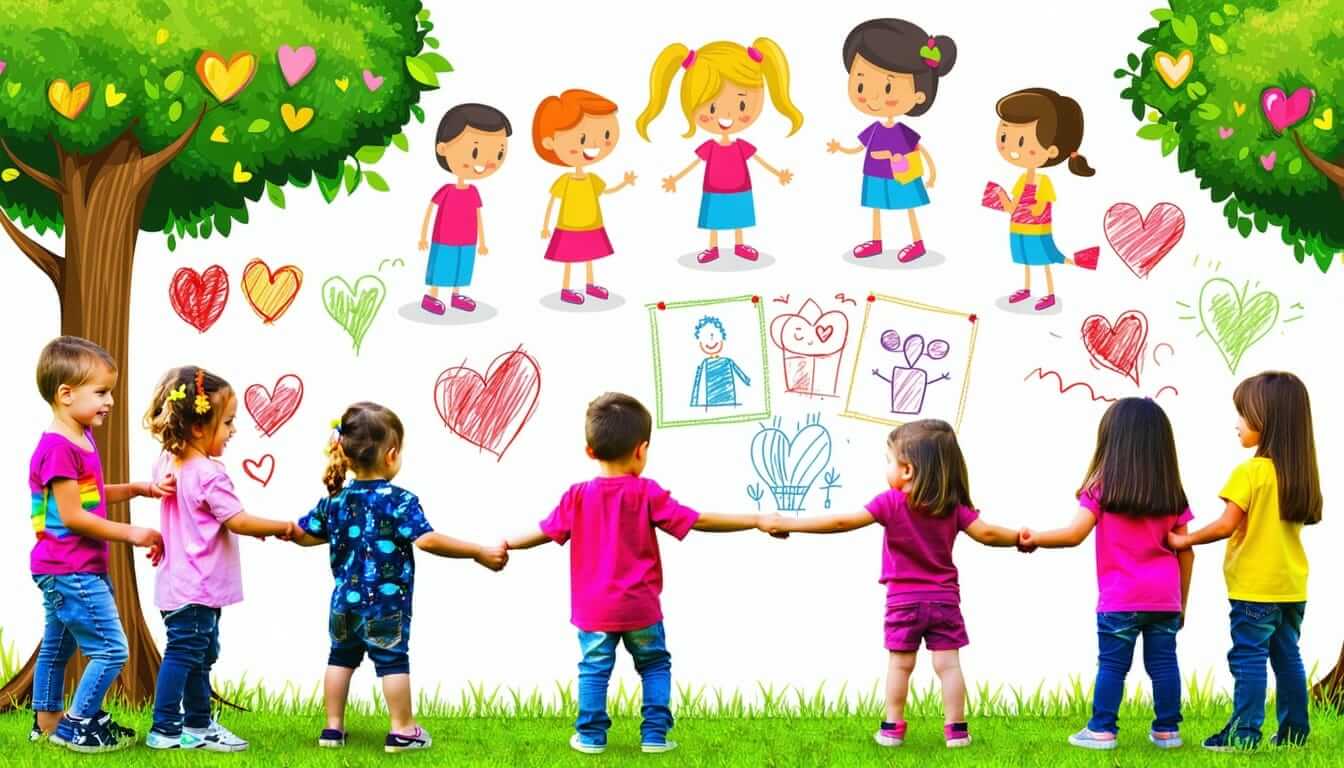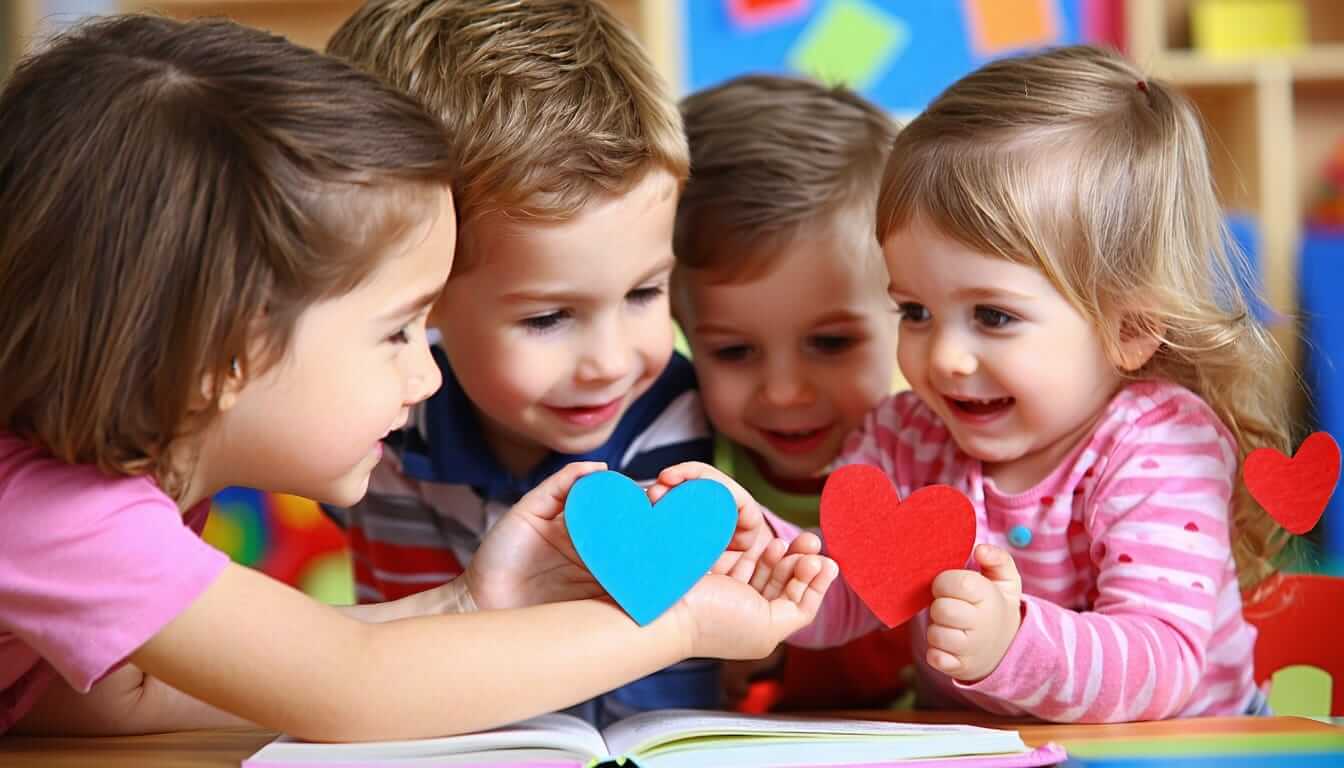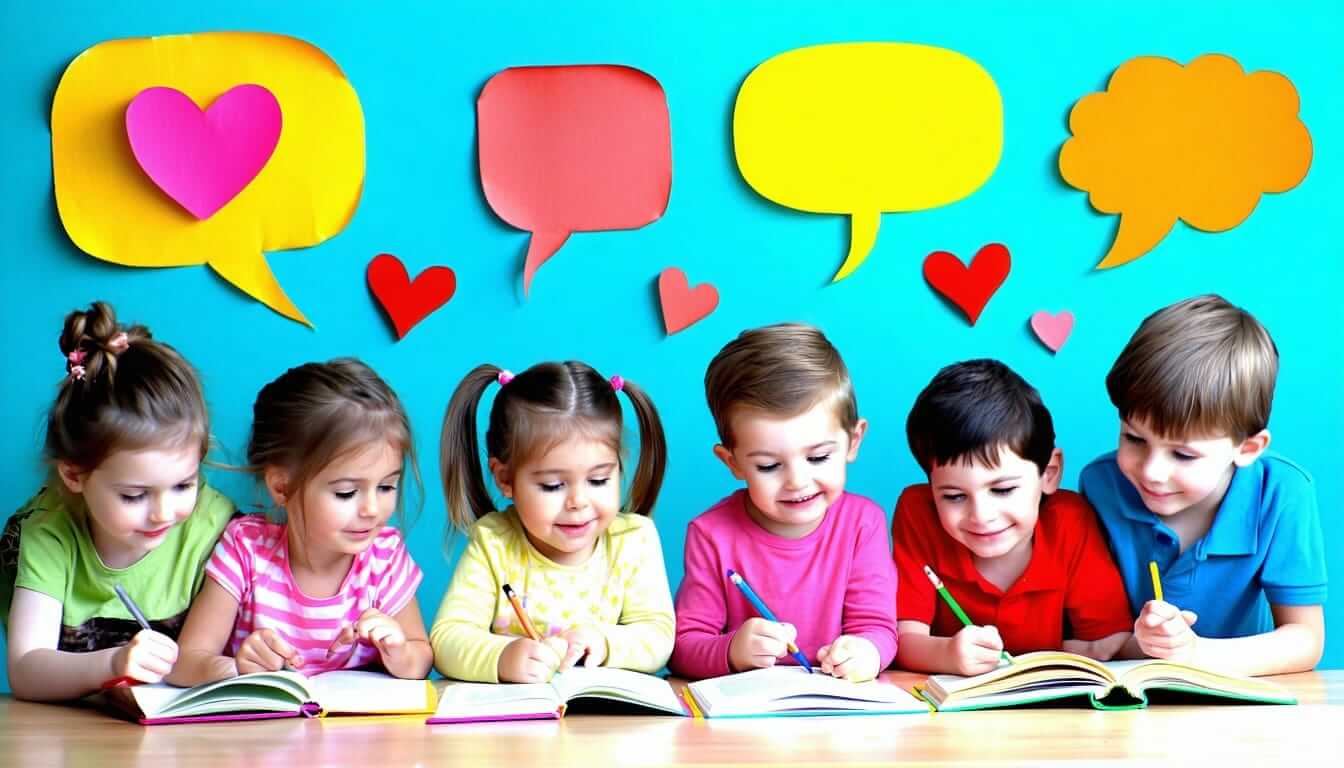Understanding Respect
Importance of Teaching Respect
Kids thrive in an environment where they’re taught to value and understand others. Learning respect sets the stage for building meaningful connections, paving the way for empathy and open-mindedness. It’s all about kids learning how their actions leave a mark on the world around them. Check out these respect activities for children that can turn understanding into action. Picture a child who picks up on respect—you’d see them chatting with friends and adults, sharing empathy like it’s the most natural thing in the world (My Brightwheel).
You know what’s amazing? Kids who grasp respect often bloom into adults who know how to navigate life with a clear compass—wired for healthier friendships and more fun, whether at school or just hanging out. Respect isn’t all about rules; it’s the secret sauce for a happier day (The Responsive Counselor).
| Perks of Teaching Respect | Scoop |
|---|---|
| Solid Friendships | Respect breeds friendships that stand the test of time. |
| Heartfelt Understanding | It’s like getting a backstage pass to others’ feelings and points of view. |
| Easy Talks | Kids learn to speak their minds, no fuss, just respect. |
| Boosting Kindness | Respect turns kindness into the norm, not the exception. |
Developing Self-Respect
Imagine this: a kid who knows their worth, understands what respect looks like. That inner strength helps them set healthy limits and grow confident in expressing their views. When kids learn to respect themselves, they’re more likely to show it to others (Begin Learning). Self-respect isn’t just about feeling good; it’s about preparing them to step into life with resilience and confidence.
Want your child to develop self-respect? Encourage activities that fire up enthusiasm and pride in who they are. Reflecting on their strengths or memorable achievements reminds them of their value.
Here are ways to build self-respect in your child:
| Activity | Lowdown |
|---|---|
| Journaling | Let them scribble down wins and feelings in a journal. |
| Affirm the Positive | Daily boosts with positive self-talk set a strong tone. |
| Charting Goals | Help them chart goals that stretch them and bring joy in accomplishments. |
Giving kids a boost in self-respect and respect for others crafts a warm, growth-ready environment. When you promote respect through rich conversations and engaging activities, you’re wrangling the right ingredients for your child’s future and connection-making toolbox. Search for more tips in instilling respect in kids and character building activities for kids.
Modeling Respectful Behavior
Hey there! So let’s chat about teaching your kid about respect—not just the boring sit-down talks or neat activities, but by them seeing you in action. You’ve probably heard it before, but seriously, the way you act as a parent is like a live tutorial for your child on how to respect others. They’re watching, trust me!
Impact of Adult Behavior
Your kiddo’s picking up on your every move, and whether you’re chatting with the grocer or your bestie, they’re noticing how you handle things. Treat folks with kindness, say thanks even when it seems small, and keep the conversation chill and polite. They’re gonna catch on.
Actions are the real deal here. Talk a good game about being kind, but if you’re showing it, your words echo louder. By keeping cool and understanding in various situations, you’re teaching your kid what really counts.
Here’s a nifty table to see where you’re at with showing respect. Take a moment to think about how often you do these things:
| Behavior | Often | Sometimes | Rarely | Never |
|---|---|---|---|---|
| Saying “please” and “thank you” | ☐ | ☐ | ☐ | ☐ |
| Listening without interrupting | ☐ | ☐ | ☐ | ☐ |
| Treating service workers with kindness | ☐ | ☐ | ☐ | ☐ |
| Respecting differing opinions | ☐ | ☐ | ☐ | ☐ |
It’s like a mirror, right? Seeing where you stand helps spot areas for a little tune-up.
Effect on Children’s Behavior
Here’s the deal: your consistent respect-game totally molds your kid’s behavior. They’re more likely to be nice to their buddies, family, and even some guy on the street. Creating a haven of respect at home and school wires them with values like kindness, fairness, and welcoming others (My Brightwheel).
If you want them to really get it, dive into some fun respect activities for kids. Ideas? How about:
- Dishing out compliments to family members
- Talking about what actions come off as respectful or not
- Taking part in team activities that show why it’s cool to be kind
By building a cozy space where respect reigns supreme, you’re equipping your kid to tackle interactions with empathy and appreciation for folks around them. For a treasure trove of more ideas, swing by our stash of character building activities for kids.
Embracing Diversity
Celebrating Differences
Celebrating what makes us unique is huge when it comes to teaching your kid respect. Chatting about different cultures, backgrounds, and all kinds of experiences? It opens their eyes, so they see the big, beautiful world with curiosity instead of fear. This appreciation makes them eager and kind, helping them connect with folks all around them. If you’re looking to kick off the learning, check out Begin Learning.
Wanna make celebrating a regular thing in your child’s life? Try these out:
| Activity | Description |
|---|---|
| Cultural Days | Pick days to try out different cultures with foods, stories, and the coolest music from around the globe. |
| Diversity Books | Dive into kids’ books spotlighting characters from all walks of life and talk about what they go through. |
| Community Events | Hit up nearby cultural festivals to show your kid how different folks live and celebrate. |
Guiding your child to appreciate the differences between people helps them grow into kind, accepting adults. For more advice on guiding your child toward respect, check our tips on teaching respect through empathy.
Fostering Curiosity and Kindness
Raising respectful kiddos means encouraging them to be curious and kind. Let your child ask questions about those things that catch their eye in others, like skin color, clothing, or traditions. This exploration nurtures an understanding and respect for who folks are. Remind them to be nice, no matter who someone is or where they’re from, baking that respect right into their everyday interactions.
Here’s how you can grow curiosity and kindness:
| Method | Description |
|---|---|
| Question Time | Make space for your child to ask their burning questions about cultures or issues they spot. |
| Kindness Projects | Get your kid involved in community service where they’ll meet and help all sorts of people. |
| Role-Playing | Play pretend with scenarios to help them practice kindness and being understanding wherever they go. |
Whether they’re at home, school, or out in the community, helping your kid respect differences is a gift that keeps on giving. When you celebrate diversity and nurture curiosity, your child picks up values like kindness and respect, which stick with them for life. Want some extra ways to help shape their character? Hop into our character building activities for kids.
Activities to Teach Respect
Helping kids grasp the idea of respect can be fun and rewarding when you turn it into activities they actually enjoy. Dive into these three ways to embed respect into your little one’s everyday life.
Pretend Play Scenarios
Think of this as acting class for young minds! Pretend play is a cool way to teach respect by letting kids role-play real-life situations. Imagine them acting out how to ask for help without sounding like a grumpy cat or settling an argument without raising their voices. It’s all about picking up respect like a fun, new game. Imagine a day where your child acts out a scenario where they need to ask for help nicely, or figure out how to make peace with a buddy. The idea’s to make respect second nature while keeping it entertaining.
| Scene | What It’s About |
|---|---|
| Asking for Help | Your kiddo needs help with something, and they must ask nicely. |
| Conflict Fixing | Your child role-plays a spat with a pal, finding a peaceful fix. |
By living these playful moments, children don not just learn respect but also become better at speaking up and getting along with others.
Creating Respect Word Rings
Ready to get crafty? Making respect word rings can be a fun, creative project to show what respect is all about. Sit down with your child, dream up words that go hand-in-hand with respect—think kindness or empathy—and jot them on cards. Join them up with a ring and voila! A go-to respect cheat sheet. Encourage them to peek at their ring when hanging out with friends, prompting them to show these traits in day-to-day life.
Here’s a starter pack to get going:
| Word | Real-Life Use |
|---|---|
| Kindness | Lending a hand to a buddy |
| Empathy | Getting the feels of others |
| Patience | Waiting without fuss for a game turn |
Not only does this reinforce respect, but it also bumps up their word power and grasp of what respect means.
Sharing Respectful Stories
Got a love for stories? Use that to plant the respect seed. Stories can hit home when teaching manners and empathy. Pick tales where characters shine by showing respect, empathy or being kind. Dive into a post-story chat to see what your child thinks about what happened in the book. Pose open-ended questions to make their minds race and relate these story gems to their everyday actions.
Here’s a list of must-read tales:
| Story Name | Big Idea |
|---|---|
| “Have You Filled a Bucket Today?” | Spreading kindness |
| “The Giving Tree” | Putting others first and appreciating |
| “Giraffes Can’t Dance” | Acceptance and celebrating uniqueness |
Keep chatting about these stories to keep the respect train rolling. For more ways to teach respect, check out our character building activities for kids and respect lessons for kids.
Encouraging Respect in Schools
Teaching kids to be respectful takes teamwork, with both teachers and parents lending a hand. Everyone pitches in to help kids understand why it’s super important to treat others with kindness and respect every single day.
Role of Teachers and Parents
Teachers are like superheroes to these kiddos. They show what respect looks like, turning classrooms into places where respect rules the roost. Meanwhile, at home, parents can chat with their children about how they’ve used those respectful skills learned at school. When both worlds sync up, the messages about being kind and respectful get stronger and clearer.
Having a quick pow-wow with teachers about your child’s behavior can keep this effort strong and steady, whether you’re teaching your child about respect or just giving them a shout-out for using kind words at dinner time.
| Role | Responsibilities |
|---|---|
| Teachers | Set the example, create a positive classroom vibe, guide fun role-play |
| Parents | Talk about respect, notice when it happens, team up with teachers |
Positive Reinforcement Techniques
A little “way to go!” can go a long way. Praising kids when they act respectfully turns those actions into habits (Charity for Change). Catch them doing something good, and they’ll want to keep it up.
Try these tricks:
- Say It Out Loud: Cheer them on when they show respect.
- Fun Rewards: Give out stickers or points to reward good behavior.
- Celebrate: Throw a mini-party when they hit a respect milestone.
Mix in some character building fun so they really get the hang of being respectful. Through games and role-playing, kids can flex their respectful muscles, learning to talk things out and treat others the way they’d want to be treated (Charity for Change).
Teaching respect in schools isn’t just about today. It’s about building a future where everyone feels welcomed and valued. Tools like respect lessons for kids help teachers and parents give the gift of respect—the kind that sticks around for good.
Reflection and Understanding
Getting kids to really get what respect’s all about isn’t a one-and-done deal. It’s more like a long chat that keeps going. Helping them take a step back to think about their actions and keep track of how they change can do wonders in making respect a part of their everyday life.
Self-Reflection Activities
Encouraging your kid to mull over their actions and feelings about the whole respect thing helps them learn better. Find ways to get them thinking about times they felt respected or wished they had more of it. Get creative with “finish the sentence” games to help them open up.
Here’s some prompts to get the convo rolling:
| Prompt | Purpose |
|---|---|
| “I felt respected when…” | Finding those golden moments when respect was shown. |
| “I wish I was respected when…” | Picking out when respect was missing. |
| “Respect means to me…” | Defining what respect looks like to them. |
Fun stuff like “Kudos Cards” where they high-five peers for their respectful acts helps cement those ideas. In-group “Four Corners” activities can make it easier to exchange views about respect (The Responsive Counselor).
Tracking Progress Over Time
Keeping tabs on your kid’s understanding and practice of respect plays a big role too. Grab a journal and let them jot down notes on respectful acts they see, pull off themselves, or even struggle with. Week after week, note these happenings:
| Week | Respectful Actions Noted | Areas for Improvement |
|---|---|---|
| 1 | Lent a hand with a friend’s homework | Could work on listening in group talks |
| 2 | Shared their toys | Wanted to show a bit more chill in chats |
| 3 | Praised a classmate | Felt overlooked in group convos |
Going over these notes on the regular with them shows the value of keeping on track and nudges them towards good vibes. You’ll see where they’re nailing it and where they could use a boost.
For more detailed fun ideas to nurture respect in kids, nosedive into our full resources at teaching respect to children and character building activities for kids.




